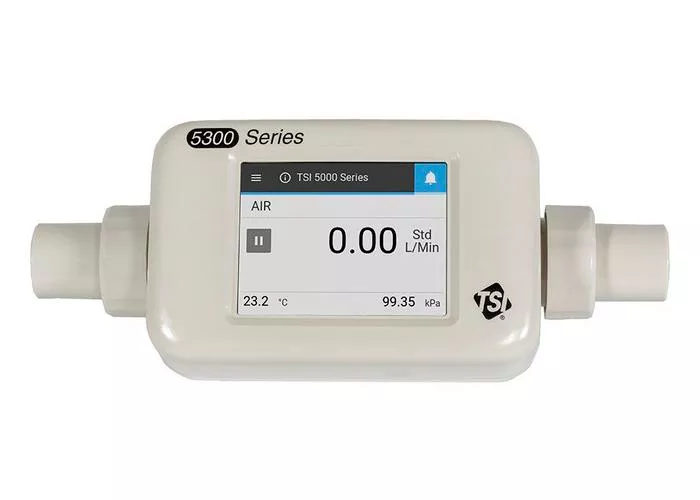Air flow meters are essential devices used to measure the volume or mass of air passing through a system. These instruments are widely utilized in various industrial sectors, including automotive, HVAC, aerospace, and environmental monitoring. Air flow meters contribute to efficiency, accuracy, and safety in applications where air measurement is critical.
What is an Air Flow Meter?
An air flow meter is a device that quantifies the amount of air flowing through a system. It can measure air volume or mass, depending on the type of meter and application. In automotive engines, for instance, air flow meters regulate the air-fuel ratio to optimize combustion. In industrial settings, they help monitor air supply systems and ensure process control.
Principles of Operation
The working principle of an air flow meter varies depending on its design. However, the fundamental objective remains the same—to detect and measure the rate at which air moves through a conduit. Some of the most common types include:
- Mass Air Flow Meters (MAF): Measure the mass of air entering a system, often using a heated wire or film. The cooling effect of the air is used to determine mass flow.
- Volumetric Air Flow Meters: Measure the actual volume of air regardless of temperature or pressure changes.
- Thermal Mass Flow Meters: Utilize the heat transfer principle to measure mass air flow, making them highly accurate.
Types of Air Flow Meters
Air flow meters come in a variety of designs tailored to specific applications and operating environments. Below are some notable types:
1. Thermal Mass Air Flow Meters
These meters use two temperature sensors and a heating element. The amount of heat carried away by the airflow determines the flow rate. They are especially useful in applications requiring high accuracy and low-pressure drop. Learn more about thermal mass flow meters.
2. Vortex Flow Meters
Vortex flow meters detect vortices shed from a bluff body placed in the airflow. The frequency of vortex shedding is proportional to the flow velocity. They are durable and suitable for various gases, including air. For further information, check out vortex flow meters.
3. Ultrasonic Flow Meters
These meters employ ultrasonic sound waves to measure flow. The transit-time or Doppler methods are commonly used. They are non-invasive and ideal for large ducts or open-air environments. Visit ultrasonic flow meters to read more.
4. Turbine Flow Meters
Turbine meters utilize a rotor placed in the path of airflow. As air flows through the meter, it turns the rotor. The rotational speed correlates with flow rate. For applications involving air or other gases, they offer a high degree of accuracy. Learn more at turbine flow meter.
5. Orifice Plate Flow Meters
These devices create a pressure drop by forcing air through a small opening. The pressure difference before and after the orifice is used to calculate flow rate. They are cost-effective but less accurate compared to other types. Learn more about orifice plate flow meters.
Applications of Air Flow Meters
Air flow meters are indispensable across various domains:
- Automotive: Monitoring and controlling the air intake in internal combustion engines.
- HVAC Systems: Regulating airflow in heating and cooling systems.
- Environmental Monitoring: Measuring emissions and air quality.
- Industrial Processes: Ensuring consistent airflow in pneumatic systems and clean rooms.
Key Components of an Air Flow Meter
Most air flow meters consist of the following components:
- Sensor Element: Detects and measures the flow.
- Signal Processor: Converts raw data into readable output.
- Display Unit: Provides visual output for real-time monitoring.
- Housing: Protects internal components and ensures durability.
Installation and Calibration
Proper installation is critical to achieving accurate readings. Factors such as the position, orientation, and straight pipe lengths before and after the meter must be considered. Calibration should be performed periodically using a reference standard to maintain accuracy over time. This is especially important in regulated industries.
Advantages of Using Air Flow Meters
- Enhanced process control and efficiency
- Accurate air measurement across different environments
- Real-time monitoring and data logging
- Low maintenance, especially in non-mechanical designs
Challenges and Limitations
Despite their utility, air flow meters have limitations. Their accuracy can be affected by dirt, vibration, or moisture. In addition, some types are sensitive to changes in temperature and pressure. Selecting the right meter for a specific application is crucial to minimizing these drawbacks.
Maintenance Tips
Routine maintenance ensures the long-term performance of air flow meters. Follow these guidelines:
- Regularly inspect for contaminants or debris.
- Check for sensor degradation or drift in readings.
- Recalibrate at intervals recommended by the manufacturer.
Conclusion
Air flow meters are fundamental tools for measuring and controlling air in a wide array of applications. By selecting the appropriate type and maintaining it properly, industries can achieve significant gains in efficiency, safety, and environmental compliance. From thermal to instrumentation advances, these meters continue to evolve with the demands of modern engineering.
FAQs
What is the difference between mass and volumetric air flow meters?
Mass flow meters measure the amount of air by weight, accounting for temperature and pressure. Volumetric meters measure air by volume, which can vary with environmental changes.
Can air flow meters be used for gases other than air?
Yes, many air flow meters are suitable for other gases such as nitrogen, oxygen, and carbon dioxide, depending on the sensor and calibration.
How often should an air flow meter be calibrated?
Calibration frequency depends on the application, usage intensity, and regulatory requirements. In general, annual calibration is recommended for most industrial applications.
Are air flow meters affected by humidity?
Some types, especially thermal and ultrasonic meters, can be affected by high humidity or condensation. Protective coatings and proper installation help mitigate these effects.
Which air flow meter is best for industrial use?
Thermal mass and vortex flow meters are often preferred for industrial applications due to their accuracy, durability, and minimal maintenance needs.

